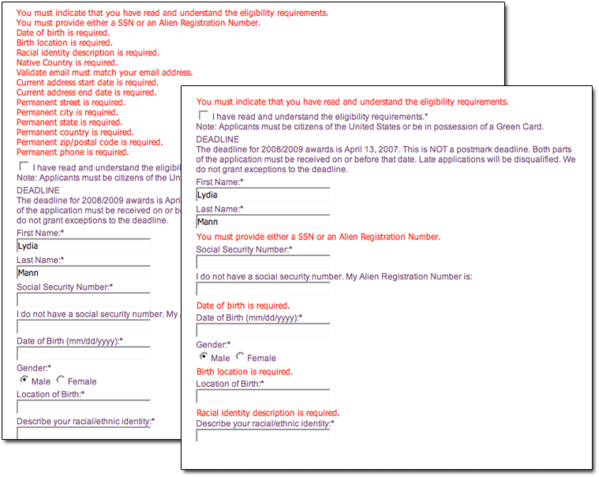Much of the internet drives me to distraction because forms are poorly designed, if they are designed at all. Now, I love developers. They are the salt of the earth and the reason any dynamic functionality I have ever dreamt of has seen the light of day, but designers need to be consulted when developing forms.
There are others much smarter than I (Luke Wroblewski for one) who can explain and prove the whats and whys of form design, but in the mean time, I can make your forms better.



Before moving the entire application process online, Worldstudio AIGA Scholarship applicants had to juggle online and physical submission procedures and AIGA and Worldstudio staff spent many days attempting to match up physical documents with online submissions. Invariably there were mismatched items necessitating follow-up calls and emails to track down missing elements.
Starting in 2010, each submission is tracked by the applicant’s unique ID both digitally as part of an email address unique to that user, and physically via a label printed from within the application.
In addition, each screen saves to the database. Applicants no longer risk losing work from a session timing out. At the bottom of each screen they can choose “Not now >> continue” if they want to save that section for a later date.
This is as low-pressure and foolproof an application process as possible, appropriate to the audience: teenagers and very young adults, their parents and school counselors.
